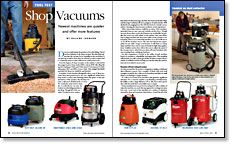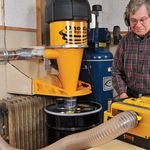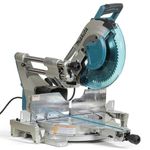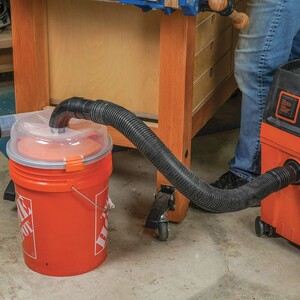Tool Test: Shop Vacuums
Newest machines are quieter and offer more features
Synopsis: Roland Johnson turns his attention to shop vacuums, evaluating the performance and ease of use of 13 varieties, ranging from $100 to $700. Among the improved features he was looking for were noise reduction, auto-start, and variable suction. Check here to find out how all the vacuums performed and which won out.
From Fine Woodworking #163
Dust is an unfortunate by-product of woodworking. One of our best defenses is the shop vacuum. Woodworkers appreciate the vacuum for its versatility in the workshop. It can pick up as well as blow dust out of hard-to-reach corners and is commonly used as a dust collector for small power tools.
From the legion of shop vacuums on the market, I selected 13 that range in price from under $100 to about $700: Alto Wap SQ and SP; Craftsman 17922 and 17924; Fein 9.77.25; Festool CT 33 E; Milwaukee 8927 and 8955; Porter-Cable 7814; Ridgid WD16650 and WD1735; Shop-Vac QL60OD and QUL625.
A number of new features distinguish today’s crop of shop vacuums from their predecessors. For one, significant strides have been made to reduce that shrieking whine that grates on the ears and nerves of the operator. My old shop vacuum could reach decibel levels of about 94—nearly the same level as thunder. It could drown out even the loudest woodworking machine in my shop. Though all of the vacuums I looked at were quieter than those of a few years ago, the Fein, the Festool, both Alto Waps and the larger Craftsman all were paragons of aural restraint. With decibel levels ranging from 58 to 69 (the level of a normal conversation), cleaning the shop became an almost serene experience.
Other noteworthy features available on many of the machines presented here are auto start and variable-suction force. Though not new, these often overlooked features are worthwhile for people who work a lot with orbital or belt sanders. Auto start allows you to plug a machine into the power outlet on the vacuum’s control panel. Then, as you switch the machine on or off, it will cue on or cut off the vacuum’s motor. The auto-start feature isn’t appropriate for use with a larger tool because it will draw too many amps and blow fuses, but it comes in handy for light-duty applications. Variable-suction force allows the user to adjust the speed of the vacuum motor, which lets you clean off your benchtop without worrying about sucking up hardware.
For this comparison, I looked at the utility of each machine based on endurance, adaptability and ergonomics. This sampling will provide you with a pretty good idea of what to expect from a variety of available brands and help you decide what size and features are best suited to your needs.
For the full article, download the PDF below.
Fine Woodworking Recommended Products


Makita LS1219L Miter Saw

Shop Fox W1826























Log in or create an account to post a comment.
Sign up Log in